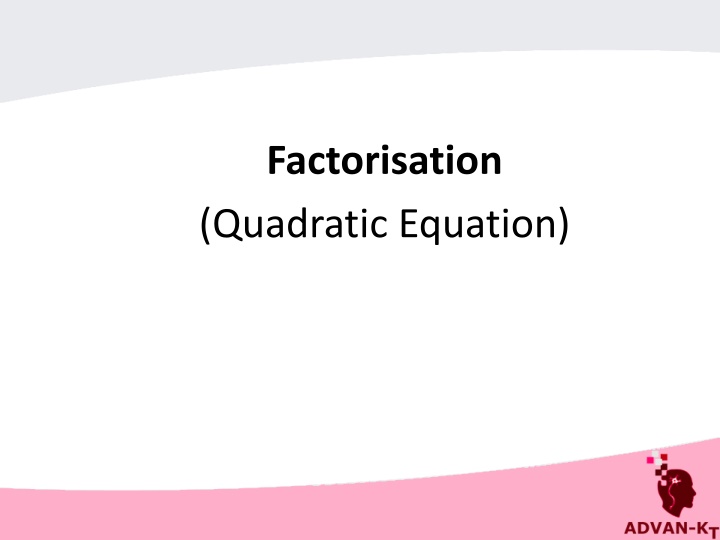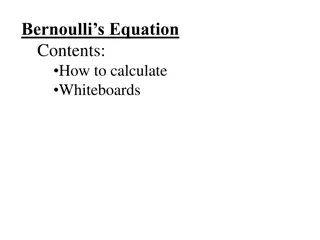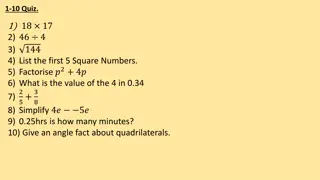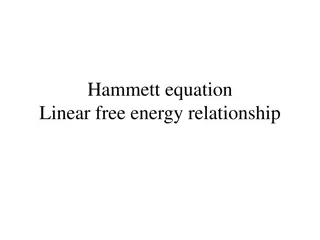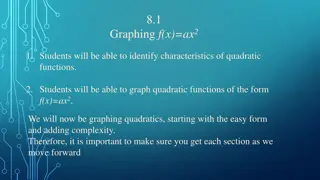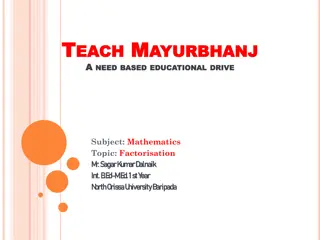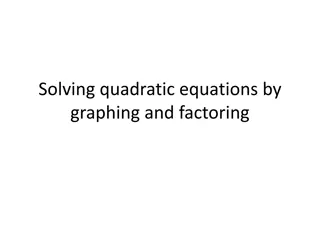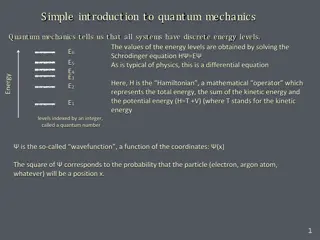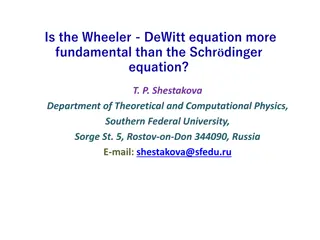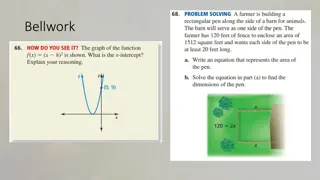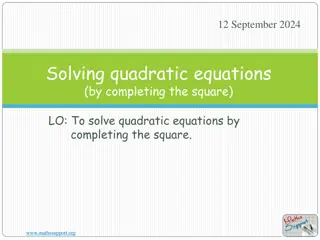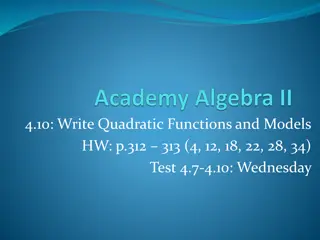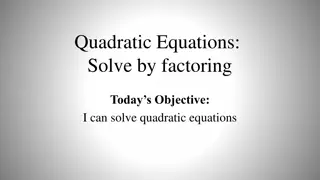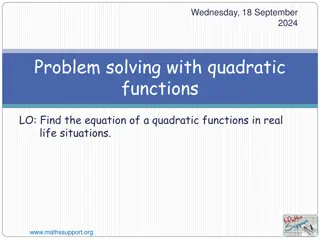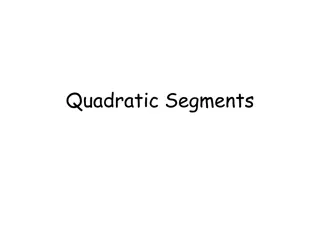Mastering Quadratic Equation Factorization Techniques
Learn various factorization techniques for quadratic equations including grouping 'Two and Two', factorization of a difference of two squares, factorization of quadratic trinomials, cross-multiplication method, and use of common factors. Improve your factorization skills and solve quadratic equations efficiently with these methods.
Download Presentation

Please find below an Image/Link to download the presentation.
The content on the website is provided AS IS for your information and personal use only. It may not be sold, licensed, or shared on other websites without obtaining consent from the author.If you encounter any issues during the download, it is possible that the publisher has removed the file from their server.
You are allowed to download the files provided on this website for personal or commercial use, subject to the condition that they are used lawfully. All files are the property of their respective owners.
The content on the website is provided AS IS for your information and personal use only. It may not be sold, licensed, or shared on other websites without obtaining consent from the author.
E N D
Presentation Transcript
Factorisation (Quadratic Equation)
2.6 Factors by Grouping 'Two and Two' Now, consider the expression 7x + 14y + bx + 2by. The expression can be grouped into two pairs of two terms as shown. 7(x + 2y) + b(x + 2y) It is evident that (x + 2y) is the common factor. Thus, (x + 2y) + (7 + b) This factorisation technique is called grouping 'Two and Two'; and it is used to factorise an expression consisting of four terms.
Solution: = + + 3 3 2 2 ( )( ) a b a b a ab b Do you know? 2.8 Taking out a Common Factor
2.9 Factorisation of Quadratic Trinomials What is a quadratic trinomial? + x + 2 ax bx c 2 x -It has 3 terms: term, term, and an independent term - a, b and c are constants, and 2 + x x 6 5 + x x - Eg. 0 a 12 + x + + x + 2 2 2 5 6 2 7 3 x x -The Distributive Law is used in reverse to factorise a quadratic trinomial, as illustrated below.
We notice that: 5, the coefficient of x, is the sum of 2 and 3. 6, the independent term, is the product of 2 and 3.
Note: The product of two linear factors yields a quadratic trinomial; and the factors of a quadratic trinomial are linear factors.
Cross-Multiplication Method + x + 2 7 10 x
Further Quadratic Trinomials Consider + x + 2 7 9 2 x
Use of a Common Factor 2 12 14 6 x x Example: Factorise Take out common factor 2, we have, 12 = 2 2 14 6 6 ( 2 7 ) 3 x x x x
2.10 Algebraic Fractions We can write an algebraic fraction in the form Algebraic fraction = Proper and Improper Fraction The fraction is proper, if degree of the denominator > degree of the numerator 3 2+ x x Eg. 4 5 The fraction is improper, if degree of the denominator degree of the numerator x 9 + 2 x 3 1 x Eg. , 2 x 2 + 3
Example: Simplify (a) (b) (c) Solution: (a) (b) (c)
Addition of Algebraic Fractions Example: Add Solve the following: (a) (b) (c)
2.11 Solving Quadratic Equations (by Factoring Method) You may solve a quadratic equations using few ways, (i) Factorisation (ii)Completed square form 2 4 b b 2 ac = x (iii)Formula of a
2.11 Solving Quadratic Equations (by Factoring Method) Eg. Solve x2 + 5x + 6 = 0 x2 + 5x + 6 = 0 (x + 2)(x + 3) =0 x + 2 = 0 or x + 3 = 0 x = 2 or x = 3 (Answer)
2.12 Solving Quadratic Equation (by Completing the Squares) Some example of Completed Square form and Perfect Squares: 2 9 3 9 + = + 2 3 x x x 2 2 4 How to express in completed square form? ( ) 2 = + 2 2 ( ) 2 x a x ax a 2 + = + + 2 2 2 x a x ax a ( ) 2 = 2 2 ( ) 2 a x ax x a a 2 + = + 2 2 2 a x ax x a a = 2 , b = 2 , b 2 2 b b 2 2 b b = 2 x bx x + = + 2 x bx x 2 2 2 2
Eg. Express the following in completed square form + + 2 10 28 x x + + 2 10 28 x x 2 2 10 10 = + + 28 x 2 2 ( ( ) ) 2 = + + 5 25 28 x 2 = + + 5 3 x
Eg. Express the following in completed square form 2 x + 2 10 28 x + 2 2 = 10 28 + x x ( ) 2 2 5 28 x x 2 2 5 5 = + 2 28 x 2 2 2 5 25 = + 2 28 x 2 4 2 5 25 = + 2 28 x 2 2 2 5 31 = + 2 x 2 2
. Example: Solve the quadratic equation
. Example: Solve the quadratic equation ( ) 2 + + = + + 2 10 28 = 5 3 x x x ( ( ) ) 2 + + 5 3 0 x 2 + = 5 3 x No solution for real values of x.
. Try the following quadratic equations:
2.11 Solving Quadratic Equations (by Formulae) 2 4 b b 2 ac = x a Find out: How does this formula formed? 2 From the discriminant , the quadratic equation has ac b 4 ac = 2 4 0 b (i) One real root/repeated roots if ac 2 4 0 b (ii) two real roots if (iii) no real roots if ac 2 4 0 b
